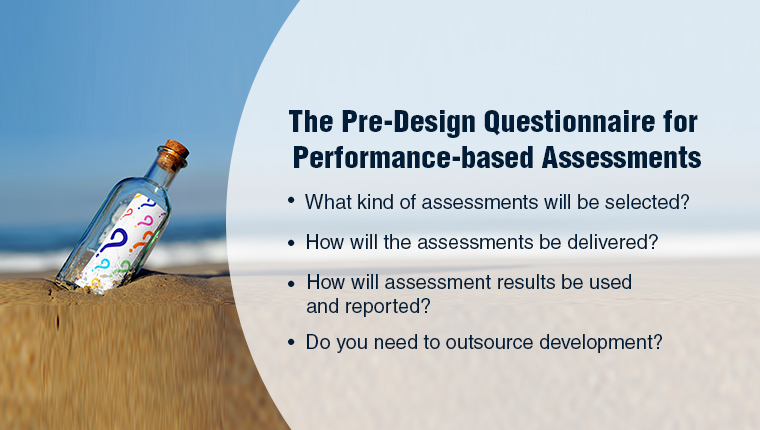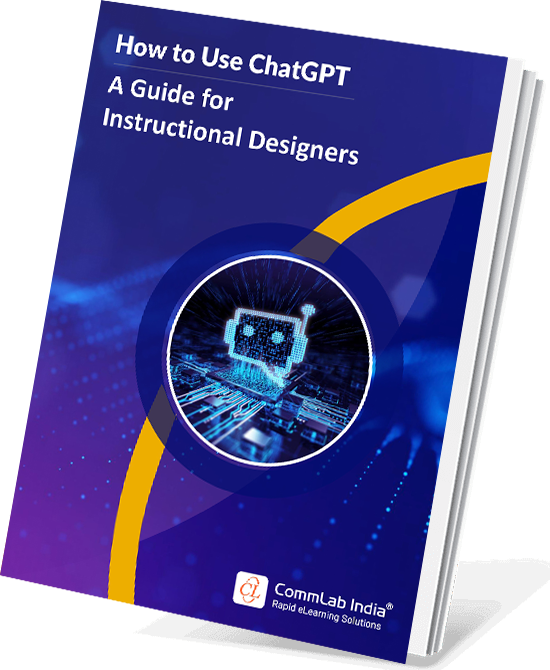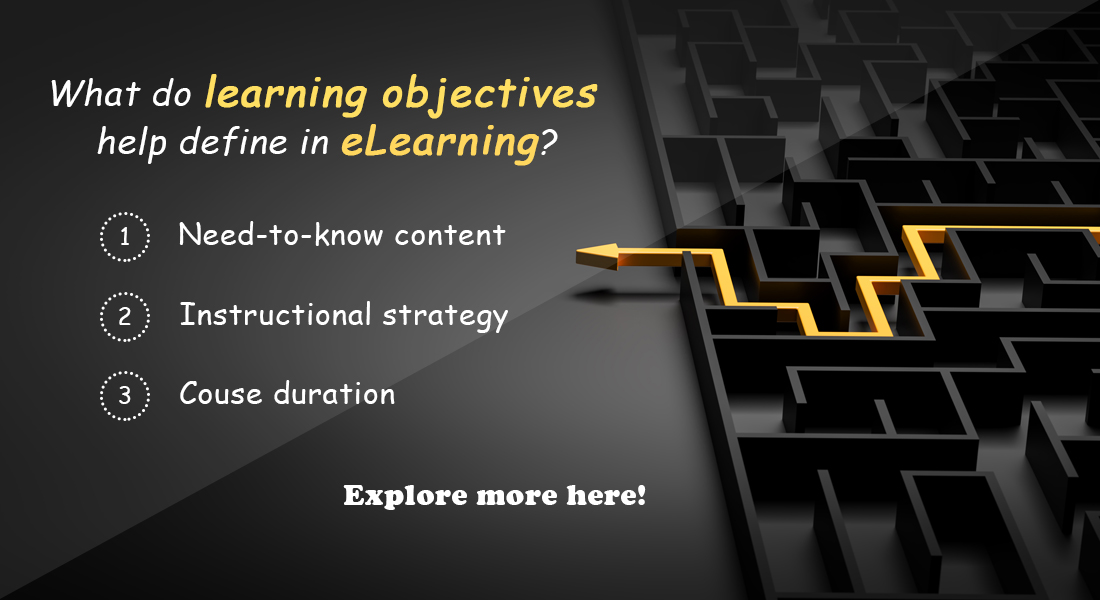6 Questions to Design Effective Performance-Based Assessments

When it comes to eLearning assessments, there are two main topics that come up a lot in conversation: the flexibility that eLearning offers learners to take a test from anywhere, at any time, and the reduced administrative work that comes with eLearning assessments. But there's still so much to learn about aligning assessments with the performance-based learning goals of online learning! This guide dives deeper into the world of performance-based assessments (PBAs) for eLearning. We'll explore how you can align your performance-based assessments with the learning objectives of the eLearning program so that they go beyond simple knowledge checks and truly measure a learner's ability to apply their newfound skills and knowledge in real-world scenarios.
→ Download Now: Instructional Design — Unleashing the Power of ChatGPT
Table of Contents
- What is Performance-Based Assessment?
- Why is Performance-Based Assessment Important?
- How to Design Effective Performance-Based Assessments?
- How will the eLearning assessments be delivered?
- How Should We Provide Feedback for Assessments?
- How will the assessment results be used and reported?
- Is there a need to outsource the eLearning design and development of assessment?
- Will there be post-assessment reinforcement?
- What type of eLearning assessments format will be preferred?
What is Performance-Based Assessment?
Performance-based assessment (PBA) is an approach to evaluation that requires employees to demonstrate their knowledge, skills, and abilities through practical tasks or projects. Unlike knowledge-based assessments which merely extend knowledge and test recall of facts and concepts, performance-based assessments (PBAs) are closely linked to the overall effectiveness of the eLearning program.
They challenge learners to apply their higher-order thinking skills to create a product or complete a process. This leads to the acquisition of new skills and improved performance at work. Tasks covered under performance-based assessments can range from a simple constructed response (e.g., a short answer) to performing a series of steps in a process.

How to Use ChatGPT — A Guide for Instructional Designers
Create Immersive Learning Experiences by leveraging ChatGPT
- Frame Learning Objectives
- Generate Scenarios
- Design Assessments
- And More!
Why is Performance-Based Assessment Important?
Performance-based assessments offer a multitude of benefits for both employees and the organization. Here are some points highlighting its importance:
Enables Deeper Learning: Performance-based assessments enable learners to engage with the content on a deeper level and apply their learning to daily tasks in meaningful ways.
Promotes Skill Development: The tasks incorporated in performance-based assessments promote the development of critical thinking, problem-solving, collaboration, and communication skills.
Boosts Learner Engagement: In contrast to simply memorizing and answering factual details, performance-based assessments are often more thought-provoking and engaging, thus fostering active learning and learner engagement.
Facilitates Real-World Relevance: Prepares learners to apply acquired knowledge in real-life situations and professional environments.
Forms Base for Feedback for Improvement: Assessment scores act as valuable resources for training managers and instructors. They can use these learning analytics to provide feedback on both strengths and areas for improvement, guiding employees in their learning journey.

How to Use ChatGPT — A Guide for Instructional Designers
Create Immersive Learning Experiences by leveraging ChatGPT
- Frame Learning Objectives
- Generate Scenarios
- Design Assessments
- And More!
How to Design Effective Performance-Based Assessments?
Creating effective assessments for online courses can be tricky. You should consider the 6 questions shared in this section before getting started with the process of designing and developing eLearning assessments. Having clarity on these questions will help you ensure that your performance-based assessments are in line with the learning objectives of your online training programs.
Here’s an overview of what these questions are.
Do You Want to Design High-Impact Performance-Based Assessments?
Here are the 6 must-consider questions to ensure effective assessment design:
- How will the eLearning assessments be delivered?
- How should we provide feedback for assessments?
- How will the assessment results be used and reported?
- Is there a need to outsource the eLearning design and development of assessment?
- Will there be post-assessment reinforcement?
- What type of eLearning assessments format will be preferred?
Now, the details.
1. How Will the eLearning Assessments Be Delivered?
A well-designed assessment needs a good delivery method. This means deciding how learners will take the assessment and who will administer it. If you have a classroom training program that you want to offer online assessments for, consider how learners will access them. Will they be on mobile devices or desktops? On the other hand, assessments for online learning courses are typically hosted on a Learning Management System (LMS) for easy access and tracking. Learners can log in and take the assessments at their convenience on desktops, mobile devices, or tablets.

2. How Should We Provide Feedback for Assessments?
When it comes to providing feedback for eLearning assessments, a simple ‘You’re right’ or ‘Sorry, you’re wrong’ as feedback just won’t do. Good feedback should be meaningful, targeting the specific needs of the learner and helping them perform his/her job task efficiently. include why their response was right or wrong, and in the process, try to reinforce learning.
Feedback should encourage learners to think critically about their performance and reflect on how to improve it. When an answer is marked as wrong, it’s crucial that the feedback includes links and references to the section in the course where the employee can find detailed explanations of the question. For example, you can provide some handy references at the end of each assessment in the form of PDFs, infographics, etc.
An effective performance-based assessment must include feedback that:
- Justifies to learners how their assessment was assessed
- Identifies and rewards specific qualities in the learner’s performance
- Guides learners on what steps to take to improve
Feedback in assessments needs to be constructive and help reinforce learning.
Watch this video to learn about the dos and don’ts of constructive feedback.
3. How Will the Assessment Results be Used and Reported?
At times, even with the best training content, there will be some learners who underperform, and this will reflect in their assessment scores. The results of assessments are indicators of not just learner performance but also of whether or not the course is achieving the desired objectives. Learning analytics gathered from performance-based assessments provide valuable insights into the effectiveness of your eLearning training programs. These assessment scores can be accessed by training managers or instructors/facilitators to check how learners are performing— if the set learning objectives are being achieved by learners, or if the existing instructional design strategy needs to be improved.
About reporting assessment results, they can be recorded and tracked through an LMS. Modern LMSs adhere to eLearning standards such as SCORM or xAPI which allow for tracking and storing learner activity and progress. Along with the post-tests, an LMS also supports pre-tests as part of the learning process.
4. Is There a Need to Outsource the eLearning Design and Development of Assessment?
Having the best content is only half the job done. Developing good performance-based assessments requires expertise in learning and development, instructional design, and various rapid eLearning authoring tools that are used to develop these assessments. Effective, relevant, and engaging performance-based assessments involve the collective effort of instructional designers, learning and design experts, and SMEs.
Some organizations have an internal team that takes care of all the design and development of eLearning assessments. However, if you don’t have the desired in-house team or budget, outsourcing the eLearning assessment design and development to an eLearning vendor is the ideal solution. Wondering why? It’s because hiring a third-party eLearning outsourcing partner provides you instant access to a team of learning experts with years of experience and expertise in creating instructionally-sound eLearning courses and assessments.
They also have streamlined project management processes in place to coordinate the inputs and feedback of the relevant stakeholders—subject matter experts (SMEs), training managers, or facilitators— during the design and development of performance-based assessments (PBAs). Moreover, eLearning vendors also use rapid authoring tools to cut down on the overall development time without compromising the quality of the content.
Here’s how you can select the right eLearning outsourcing vendor.

PRO TIP: Instead of asking learners the same assessment questions until they achieve a pass mark in their final assessment, get your eLearning vendor to create a pool of quiz questions (50 or more) and randomize them. With the randomizing strategy in place, your learners will receive a new set of questions every time they take the quiz, helping you evaluate the comprehension of your learners effectively.
5. Will There be Post-Assessment Reinforcement?
The marks obtained by learners in their performance-based assessment come in handy to identify learners who need some additional help. Based on these results, you can coordinate with training managers and add resources for reinforcing important concepts and topics. These resources can be in the form of microlearning modules, scenarios, etc.
6. What Type of eLearning Assessments Format Will Be Preferred?
Selecting the optimal assessment type again depends on the nature of the learning objectives formulated initially. As you know, there are umpteen kinds of eLearning assessment including fill in the blanks, true/false, single or multiple select multiple choice questions, matching, and drag and drop. However, different learning objectives need different assessment types. If assessments are misaligned with the performance-based learning objectives, it can undermine both learner motivation and learning.
Wrapping It Up!
For ensuring optimal performance, eLearning assessments must be aligned with the performance-based learning objectives. In today’s digital, innovative world, you can formulate learning objectives that aim to bridge the gap between expected and actual performance with the help of AI tools. Curious to learn how? Check out our comprehensive, handy guide on how to use ChatGPT for effective eLearning design and development.
Editor's note: This post was originally published on November 08, 2019 and has been updated for comprehensiveness.





![How to Design Effective eLearning Assessments? [Infographic]](https://blog.commlabindia.com/hubfs/blogs/strategies-design-effective-elearning-assessments-info.jpg)